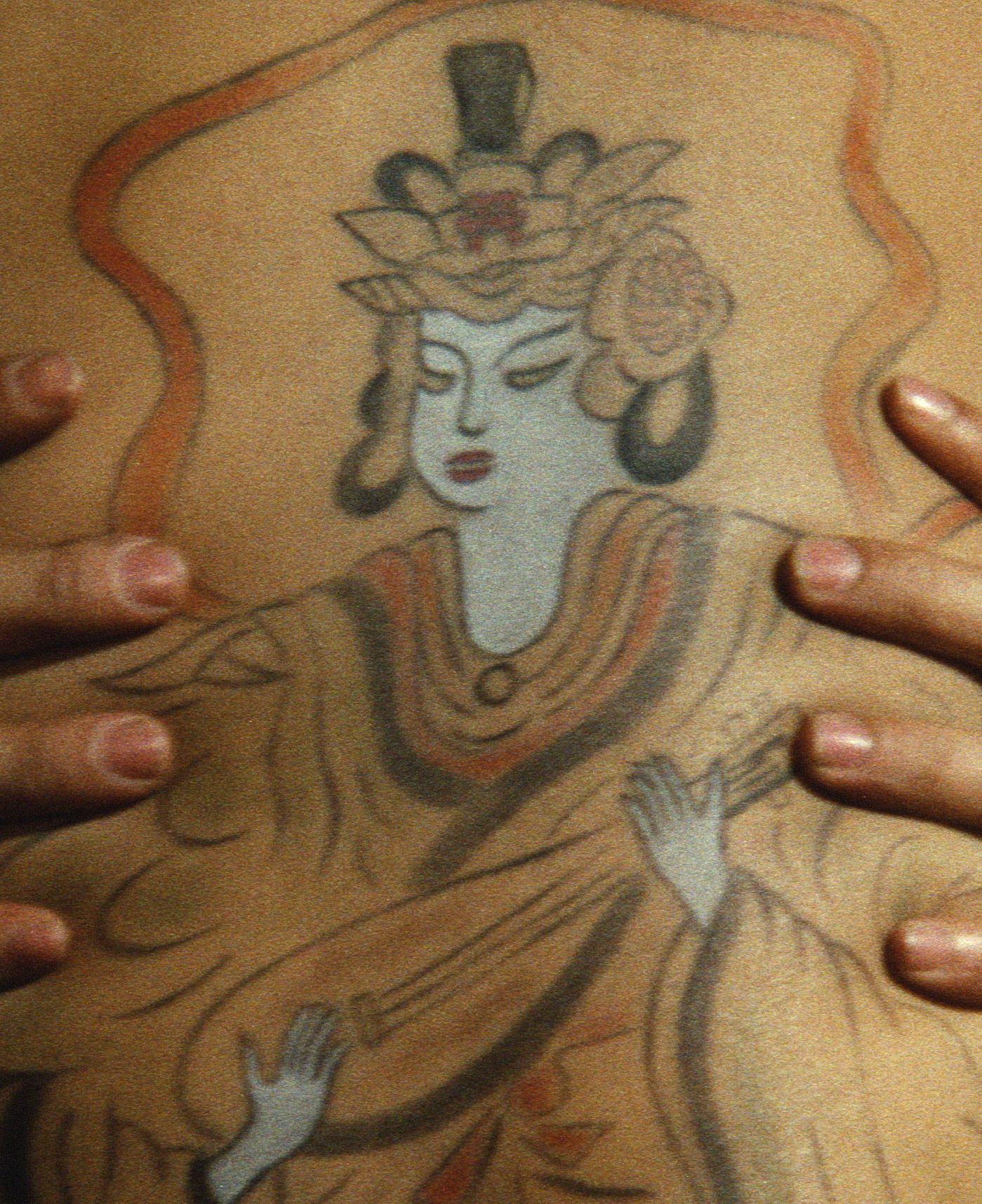| Regie |
Watanabe Mamoru |
| Darsteller |
— |
| FSK |
unbekannt |
| Produktionsland |
Japan |
| Jahr |
1970 |
| Verleih |
Rapid Eye Movies |
| Kategorie |
Erotik |
| Webseite |
http://rapideyemovies.de |
| Kinostart |
— |
| Länge |
76 min |
| Audioformat |
— |
| Untertitel |
German |
| Bildformat |
2.35 (Cinemascope) |
| Framerate |
— |
| 2D/3D |
2D |
Katori Tamaki, the star of the first ever pink film, Flesh Market (1962), stars as the roaming outlaw Okayo, also known as Benten due to the prominent tattoo of the Buddhist Goddess of Love emblazoned across her back. On the run from her persecutors, who seek to claim the tattoo and its skin canvas as a bounty, Okayo finds a safe haven in the arms of the mysterious shakuhachi (bamboo flute) playing Seigaku, himself tattooed with the image of Kisshôten, the Goddess of Prosperity.
Full of poetic symbolism and striking widescreen compositions, as well as a mesmerising use of the part-colour format, Woman Hell Song was one of a number of fruitful collaborations with screenwriter Atsushi Yamatoya (here using the pseudonym of Hino Wataru), the director of Inflatable Sex Doll of the Wastelands (1967) and one of the anonymous contributors to the screenplay for Suzuki Seijun’s Branded to Kill (1967). Inspired by Toei’s popular late-60s Red Peony Gambler female yakuza series starring Fuji Junko, it was the sequel to Despicable Man-Killing Benten (1969), a title which, like so much of the pinku eiga output of this era is now considered lost. Women Hell Song itself exists to this day only because Watanabe, who produced it through his own company Kantô Eihai, had kept his own personal print of the film.


















